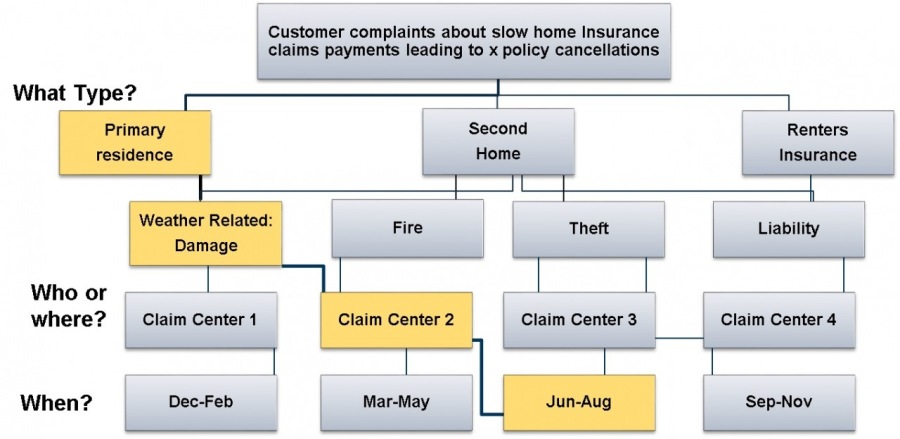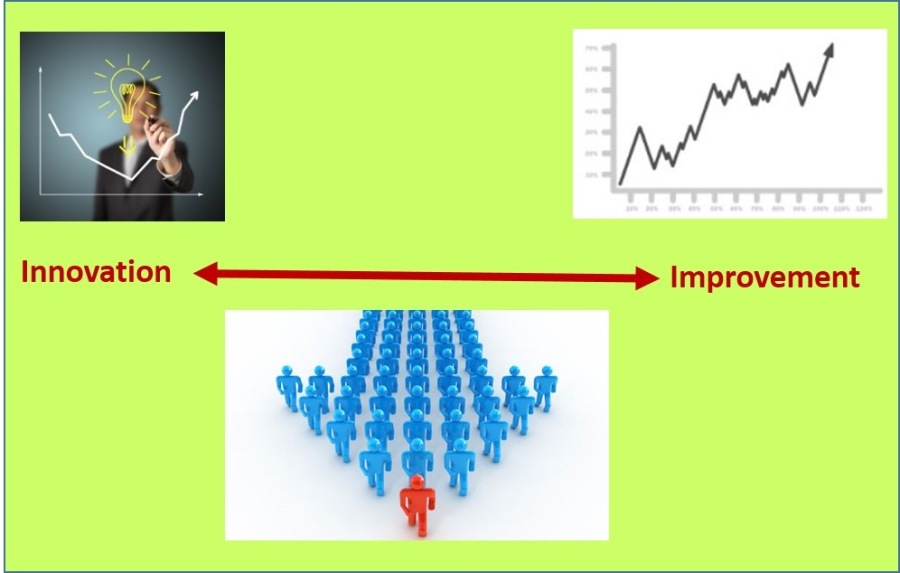What Problem Are We Trying to Solve?
-

Many people describe themselves as “problem-solvers.” But what most of us mean is that we are “solution-finders;” we barely hear the problem before jumping to a solution we have seen applied at some other time and place.
My Results-Alliance colleague, Dr. Richard Taylor, is a statistician, a professional engineer, a Six Sigma Master Black Belt, and a PhD in Operations Research. My own background is quite different. I focus on Leadership, Change Management, and Organizational Development. We are an unusual pair. When we train continuous improvement (CI) together, Ric and I often joke that together we make up a whole person.
When we train CI together Ric lets me do the problem definition bit, mostly because he’s better at measurement systems analysis, hypothesis testing and design of experiments than I am. Sometimes, though he can’t help himself and jumps in before I can ask my favorite starter question to the group, “why do I say that Problem Definition is the most important phase of continuous improvement?’ Ric is as passionate about problem definition as I am, so when he steps on this line I just smile and chime in and say “Why would Ric say such a thing?”
It is an obvious question that always produces the predictable answer, “Because if you don’t define the problem correctly the rest of the project is worthless and you get no improvement.”
“Then why do so many continuous improvement projects have to circle back and redefine the problem?” I ask, which produces the sheepish answer that “we aren’t thorough enough in defining the problem.” I tell class participants honestly that they aren’t alone, that even Ric and I with over thirty years each at this CI stuff still fall prey to jumping to a solution. Then I proceed to give them a process, which, if followed, will help:
- Determine the customer
- Focus on the problem area
- Define the problem
- Frame the problem
- Gain stakeholder agreement on the problem
Like a lot of CI concepts, this process seems a “statement of the blindingly obvious.” Also like a lot of CI, the secret isn’t in brilliant insight, but in the rigor of practice.
Determine the customer
Many CI practitioners are operationally focused. They know the process and can see the problems as they occur. Therefore it is useful to define the problem from the customer’s point of view. I always start with the end customer, the one who pays money for a product or service, even if that person is a long way from the problem because the end customer is why we are in business. I then work my way backward to the person who receives the output from the step of the process we are describing. Along the way there may be many intermediate customers, which can include external groups like regulators and internal groups, perhaps other functions like accounting, who count the outputs or use it in some way. Understanding the problem from the customer’s viewpoint helps to define it and adds some urgency to solving the problem.
Focus on the problem area
Sometimes a problem presents itself with a simple or obvious solution. We had failed to notify a customer that his mortgage was declined because of unclear internal responsibilities. The process was changed to set the single point of contact as the mortgage officer (within backup designation) and a deadline for notification of 24 hours after a failed credit check.


Define the problem
Writing a simple problem statement for a complex problem one of the most difficult tasks in continuous improvement. People want to put in their solution, “Design a new process that. . .”
Ric and I have found a single question that helps focus the definition:
“What is wrong with what, and so what?”

Frame the problem
Perhaps the biggest difficulty that CI practitioners face is that the problems they try to solve are TOO BIG. The vernacular for this challenge is ‘trying to solve world hunger. The tool that is useful to break a larger problem down is the scoping tree. By asking the questions what type, who, where, and when we can break down the problem into bite-sized pieces which can be solved in microcosm.

Other ways to scope the problem are to set boundaries by determining what is in the problem definition and what is out of scope. Process maps and Is/Should matrices are also tools to limit scope.
Stakeholder agreement on the problem
Once you have a definition of the problem, take it to everyone who touches the problem. This is akin to the salesperson saying to you “if I could show you a way to. . . .” It builds urgency to solve the problem and eagerness for the solution. It also avoids anyone saying “wait, that’s not the problem as I see it.” Sometimes stakeholders say “You know, as long as you’re looking at receivables, could you look at payables too?” The great advantage of a scoping tree, or another scoping tool like the in-scope/out-of-scope matrix is that you can show that you have identified that area for focus after you complete this project. At this point you want agreement on “what problem are we trying to solve” so you can get agreement on the solution.
Be prepared though. The one sign of a well-written problem statement is that everyone wants to jump in and offer a solution.
© Copyright Alan Cay Culler 2018
If you enjoyed this article, please share it, or join the conversation with a comment. If you’d like more information please contact me. alan@results-alliance.com or call +1-973-744-4911
Articles from Alan Culler
View blog
Janus, the two-faced god of gateways, beginnings and transitions was often found above the Roman vil ...

“Leadership!” “Those at the top must lead the parade!” “Can’t do anything without the leaders.” · A ...

I had been an aspiring actor, waiting tables and diving a taxi for a couple of years. Then I decided ...
Related professionals
You may be interested in these jobs
-
speech language path
Found in: Lensa US P 2 C2 - 1 day ago
MOODY NEURO REHABILITATION INSTITUTE Lubbock, United StatesJob Details · Job Location · Moody Neuro Lubbock - Lubbock, TX · Position Type · Full Time Exempt · Education Level · Graduate Degree · Travel Percentage · None · Job Shift · Variable · Job Category · Health Care · Description · PHYSICAL LOCATION: · Moody Neurorehab ...
-

Ready Mix Driver Punta Gorda
Found in: One Red Cent US C2 - 3 weeks ago
CRH Punta Gorda, United States· Job ID: 493253 · Preferred Materials, Inc., a CRH Company, is the leading vertically integrated supplier of construction materials, and construction/paving services in the United States. Headquartered in Tampa, Florida, the Preferred Materials Region has facilities throughout ...
-

Supervisory Medical Record Administrator
Found in: Talent US 2 C2 - 5 days ago
Veterans Health Administration Prescott, United StatesSummary · Northern Arizona VA Healthcare System has a detail/temporary promotion opportunity to a GS-12 Supervisory Medical Record Administrator (Chief HIMS) position not to exceed 120 days. · Detail: A temporary assignment to a different position with no change to pay. · Te ...


Comments
Alan Culler
6 years ago #7
Thank you Pascal Derrien Social Enterprising seems a higher process improvement calling than taking waste out of business processes. I guess improvement in every field starts with confronting the current reality
Alan Culler
6 years ago #6
Thank You Debasish Majumder I appreciate your support
Debasish Majumder
6 years ago #5
Pascal Derrien
6 years ago #4
Bill Stankiewicz
6 years ago #3
I agree
Bill Stankiewicz
6 years ago #2
Ali Anani
6 years ago #1